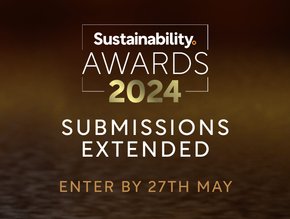Executive Pay Increasingly Linked to ESG Metrics and Climate

Two surveys from one consulting company have shed interesting light on the differing fortunes of executive pay and employee benefits.
WTW – which provides global risk advisory, insurance brokerage and consulting solutions – found that 81% of companies include ESG in their executive incentive plans, with climate rising rapidly through the ranks when it comes to compensation.
In a separate survey, WTW found multinational companies are introducing global minimum standards for employee benefits, and that figure has almost doubled (to 70%) since 2019 (36%).
While this seems to be good (or at least better) news for business leaders and for rank-and-file employees, it’s interesting to see what motivates both.
This is the fourth year that WTW has conducted its survey on the use of environmental, social and governance (ESG) metrics in executive incentive plans. WTW reviewed public-domain data from more than 1,000 companies for the study – which highlighted some interesting (if unsurprising) regional variations.
ESG metrics are used in 81% of executive incentive plans globally, up from 77% in 2022. ESG is factored into pay in 76% of US companies, compared to 93% in Europe.
Environment and Climate Included in Executive Incentives
Most companies use ESG metrics in their short-term incentive (STI) plans, but long-term incentive (LTI) plans have also shown a steady increase, especially in Europe. ESG in LTI plans has tripled in the US and Canada since 2019, albeit from a low starting point.
More than three-quarters of companies in Asia Pacific used at least one ESG metric in their executive incentive plans. Australia, Singapore and Japan are leading in APAC, but other countries across the region are struggling to include ESG in their thinking.
The good news, for all of us, is that there has been significant expansion in environmental and climate metrics – with 80% of companies in Europe including these in their plans.
This growth in use of such metrics is rocketing in the US, where it has nearly quadrupled to reach 44%. That compares to 39% in Asia Pacific.
WTW concludes that the incorporation of ESG metrics in executive incentive plans has become universal, while each industry emphasises the ESG factors with the greatest impact on their businesses.
Other research from The Conference Board backs up the WTW findings, and also states that ESG metrics for CEOs often also apply to other executives too.
Their analysis of the Russell 3000 Index also shows a direct link between company size and the use of ESG performance metrics in executive incentive plans – the bigger the company, the more likely it is to include ESG considerations.
ESG performance metrics vary considerably by sector, says The Conference Board, with utilities (89.1%) and energy (72.7%) sectors among the leaders, but information technology (28.3%) and communication services (35.7%) lagging.
Worker Benefits Improve as Multinationals Adopt Global Minimum Standards
Everyone loves a level playing field, and now more employers (70%) are providing a global minimum standard when it comes to employee benefits, according to WTW.
WTW reports that COVID-19 highlighted the important role benefits play in wellbeing, and resilience. This is important not just to retain existing employees, but to attract talent in an increasingly competitive market.
The survey showed that 63% of companies are looking to use employee benefits to signal their purpose and values to stakeholders. This builds on the trend WTW has identified to use employee benefits to attract and keep talent and to support employee wellbeing.
“More employers are incorporating global minimum standards for employee benefits, as part of designing benefits that better support employee wellbeing, attraction and retention,” said Nigel Bateman, Managing Director of Integrated & Global Solutions at WTW.
“Global minimum standards are one way to signal an ambition for employee benefits to be inclusive. But, for these ambitions to become a reality, there will need to be a fundamental shift in how many companies operate their benefits programs.
“Wellbeing will need to be viewed as an outcome to be achieved, rather than a set of programmes to be added.”






